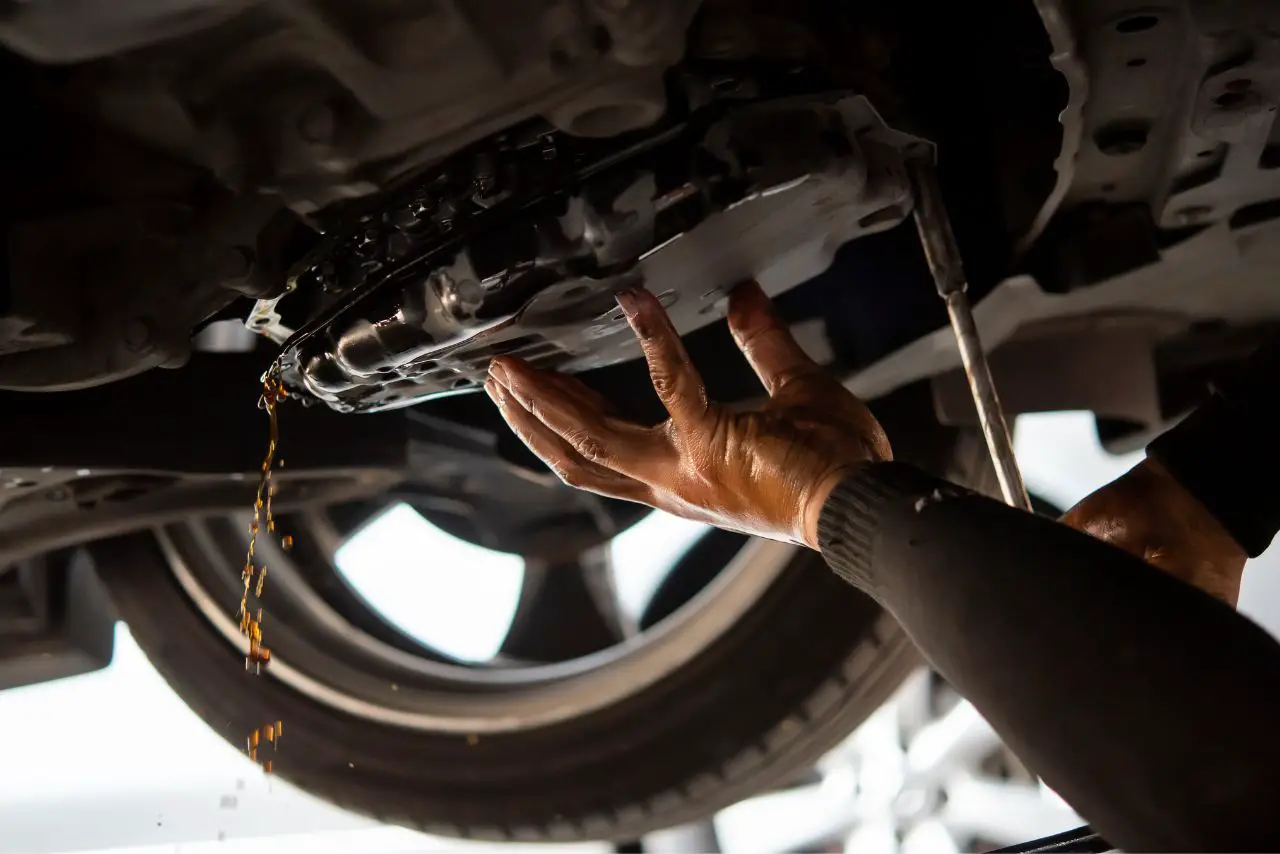If you own a Ram 2500 diesel, it’s important to understand the proper maintenance procedures to keep it running smoothly. One important aspect of maintenance is ensuring that your engine’s coolant levels are adequate.
Without enough coolant, your engine can overheat, causing serious damage and potentially leaving you stranded on the side of the road.
Fortunately, adding coolant to your Ram 2500 diesel is a relatively simple process that you can do yourself with the right tools and knowledge. So, How To Add Coolant To Ram 2500 Diesel?
In this article, we’ll guide you through the process of adding coolant to your Ram 2500 diesel. We’ll cover everything from gathering the necessary tools and supplies to locating the coolant reservoir and adding the coolant itself.
By following our step-by-step instructions and tips, you’ll be able to keep your engine running smoothly and avoid costly repairs down the road. So let’s get started!
Table of contents
How To Add Coolant To Ram 2500 Diesel?
To add coolant to a Ram 2500 diesel, park your truck on a level surface, turn off the engine, and let it cool down. Locate the coolant reservoir, which is usually a translucent plastic bottle with a cap that is labeled “coolant” or “antifreeze.”
Remove the cap and clean the opening with a clean rag. Check the level of the coolant. The coolant should be between the “full” and “low” marks on the reservoir.
If the coolant level is low, add a 50/50 mixture of OAT (Organic Acid Technology) coolant and distilled water. Do not add water to a system that already has pre-mixed coolant.
Add coolant slowly until it reaches the “full” mark on the reservoir. Replace the cap and tighten it securely. Start the engine and let it run for a few minutes. Check the coolant level again and add more coolant if necessary.
Here Are Some Additional Things to Keep in Mind:
Importance of Adding Coolant to Your Ram 2500 Diesel:
You gotta understand the importance of adding coolant to your Ram 2500 Diesel, it’s crucial for keeping your engine running smoothly.
Your truck’s engine generates a lot of heat, and without proper cooling, it can quickly overheat and shut down.
Adding coolant not only helps prevent overheating, but it also helps maintain the proper temperature range for optimal engine performance.
Regularly flushing your coolant system is also important to keep your Ram 2500 Diesel running at its best.
Over time, coolant can become contaminated with rust, debris, and other particles that can clog up your radiator and cause corrosion in your engine.
By flushing your system and replacing old coolant with fresh, clean coolant, you can prevent these issues and keep your engine running smoothly.
Step by Step Comprehensive Guide on How to Add Coolant to Ram 2500 Diesel:
1. Gather the Necessary Tools and Supplies:
To successfully add coolant to your Ram 2500 Diesel, you need to gather the necessary tools and supplies. Firstly, you must identify the correct type of coolant that is compatible with your vehicle’s engine.
This is crucial for maintaining the engine’s operating temperature and ensuring optimal performance.
Secondly, getting the right equipment, such as a funnel, gloves, and a coolant tester, will make the process easier and more efficient.
2. Identifying the Correct Type of Coolant:
Before adding coolant to your Ram 2500 diesel, it’s crucial to identify the correct type of coolant that your engine requires. Using the wrong type of coolant can result in engine damage and decreased performance.
To ensure that you are using the correct type of coolant, check your owner’s manual or consult with a mechanic.
Using the correct type of coolant is essential for maintaining the health of your engine. Here are three reasons why using the right coolant is crucial:
3. Getting the Right Equipment:
One important aspect of properly maintaining your engine is ensuring you have the right equipment on hand for any necessary repairs or maintenance tasks.
The first step is choosing the right coolant. Once you have the correct coolant, the next step is getting the right equipment to add it to your engine.
One important piece of equipment is a coolant pressure tester. This tool allows you to check the pressure of your cooling system and ensure that it is functioning properly.
It is especially important to check your coolant pressure if you have recently added new coolant or if you are experiencing issues with your engine overheating.
4. Locate the Coolant Reservoir:
The coolant reservoir on the Ram 2500 diesel can easily be identified by its translucent plastic material and location near the engine. It is important to check the capacity of the reservoir before adding coolant.
You can do this by consulting your owner’s manual or checking the markings on the side of the reservoir.
Before adding coolant to the reservoir, it is important to take necessary safety precautions. First, make sure the engine is cool before opening the reservoir cap.
If the engine is hot, the pressure inside the reservoir can cause the coolant to spew out and potentially cause injury. Additionally, use caution when handling the coolant itself, as it is toxic and can cause skin irritation.
Once you have located the coolant reservoir and taken the necessary safety precautions, it is time to add the coolant.
5. Prepare to Add Coolant:
Get ready to add more coolant to your truck’s reservoir by making sure the engine has cooled down and taking necessary safety measures.
You don’t want to risk any injuries while working on your vehicle. Once you have taken the necessary precautions, you can proceed to the next steps.
First, start by checking compatibility between the new coolant and the old one. Mixing coolants with different formulations can cause severe damage to your truck’s cooling system.
Be sure to read the label on the new coolant carefully and ensure that it’s compatible with your truck’s make and model.
Next, remove the old coolant from the reservoir. You can do this by opening the cap and unscrewing the drain valve. Make sure you have a container ready to catch the old coolant.
Once you’ve drained the old coolant, replace the drain valve and fill the reservoir with the new coolant.
6. Add the Coolant:

Before adding the coolant, ensure that the engine has cooled down and take necessary safety measures to avoid any risks.
Wear gloves and safety glasses to protect yourself from any splashes. Also, ensure that the engine is not running and the car is on a level surface.
Once you are sure that the engine is cooled down, locate the coolant reservoir. The location of the reservoir may vary depending on the make and model of the car, but it is usually labeled. Check the owner’s manual for more information if you are unsure.
Once you have found the coolant reservoir, remove the cap carefully. Add the coolant slowly, checking the level frequently. Do not overfill the reservoir. Once you have added the coolant, replace the cap securely.
Dispose of the old coolant properly. Do not pour it down the drain or on the ground. Proper disposal and safety precautions are important to protect the environment and yourself.
7. Close the Reservoir Cap and Check for Leaks:

Now that you have added the coolant to your Ram 2500 diesel, it’s time to close the reservoir cap and check for leaks.
Make sure to tighten the cap securely to prevent any coolant from leaking out. After that, start the engine and let it run for a few minutes to circulate the coolant throughout the system.
Finally, check for any leaks around the reservoir and hoses to ensure that everything is properly sealed.
8. Tightening the Cap:

To ensure the proper sealing of the coolant system, it’s important to firmly tighten the cap on the radiator of your Ram 2500 diesel.
Proper tightening is essential in preventing leaks and maintaining the optimal performance of your vehicle.
After filling the reservoir with the recommended coolant, place the cap back on the radiator and firmly tighten it to the manufacturer’s specifications.
To emphasize the importance of proper tightening, here’s a table showing the recommended torque settings for the radiator cap on a Ram 2500 diesel:
| Model Year | Recommended Torque |
|---|---|
| 2003-2007 | 18 ft-lbs |
| 2008-2012 | 15 ft-lbs |
| 2013-2021 | 18 ft-lbs |
Always refer to your vehicle’s manual for the exact torque specifications, as they may vary depending on the year and model of your Ram 2500 diesel.
9. Starting the Engine and Checking for Leaks:

You’re ready to fire up the engine and make sure there are no leaks in the cooling system. Before starting the engine, double-check that the coolant level is at the appropriate level.
The importance of proper coolant levels cannot be overstated, as low levels can cause engine overheating and potential damage.
Once you’ve confirmed the coolant level, start the engine and let it run for a few minutes. Keep an eye out for any leaks or drips, as these are common coolant leaks to watch for.
Check around the radiator, hoses, and connections for any signs of leakage.
10. Monitor Coolant Levels and Schedule Regular Maintenance
As a Ram 2500 diesel owner, it’s important to keep an eye on your coolant levels and schedule regular maintenance to ensure your engine runs smoothly and efficiently.
The importance of maintenance cannot be overstated, as neglecting it can lead to costly repairs and even engine failure. Regularly monitoring your coolant levels is one of the easiest ways to ensure your engine stays healthy.
Low coolant levels can cause a variety of problems such as overheating, decreased fuel efficiency, and damage to the engine.
Signs of low coolant levels include the temperature gauge rising higher than usual, steam coming from under the hood, and the heater not producing warm air.
If you notice any of these signs, it’s important to add coolant as soon as possible to avoid further damage to your engine.
The following table provides a general schedule for coolant maintenance, but it’s always best to consult your owner’s manual for specific recommendations.
| Mileage Interval | Maintenance |
|---|---|
| 30,000-50,000 | Inspect coolant, hoses, and clamps for damage |
| 60,000-80,000 | Replace coolant and inspect radiator for leaks |
| 100,000+ | Replace thermostat and inspect water pump for leaks |
By staying on top of your coolant levels and scheduling regular maintenance, you can enjoy the freedom of worry-free driving.
Frequently Asked Questions
How Often Should Coolant Be Added to A Ram 2500 Diesel?
To ensure proper engine function, check coolant levels regularly.
Frequency recommendations vary, but generally, coolant should be added when the level falls below the minimum mark.
Signs of low coolant level include overheating, coolant leaks, and engine damage.
What Type of Coolant Should Be Used for A Ram 2500 Diesel?
Choosing the right coolant brand is crucial for your Ram 2500 diesel. Using the wrong one can lead to engine damage.
Proper coolant levels prevent overheating, which keeps your truck running smoothly and frees you from unexpected repairs.
Can Any Type of Coolant Be Used with A Ram 2500 Diesel?
Using different types of coolants suitable for Ram 2500 Diesel can cause serious damage.
It is essential to use the right coolant for your vehicle, as recommended by the manufacturer, to ensure optimal performance and prevent expensive repairs.
Is It Necessary to Flush the Coolant System Before Adding New Coolant?
Before adding new coolant to your Ram 2500 diesel, it is important to flush the system to remove any buildup or contaminants.
Also, ensure that the new coolant is compatible with your vehicle’s specifications to avoid damage and maintain optimal performance.
What Are the Consequences of Not Adding Coolant to A Ram 2500 Diesel?
Not adding coolant to your Ram 2500 diesel can lead to engine overheating, which can cause serious damage to engine components.
Don’t risk expensive repairs – keep your engine cool and running smoothly by adding coolant regularly.
Why Is Adding Coolant Important for A Ram 2500 Diesel?
Adding coolant to your Ram 2500 Diesel is essential for maintaining the proper operating temperature of the engine.
Coolant helps in dissipating heat generated during engine operation and prevents the engine from overheating.
Conclusion: How To Add Coolant To Ram 2500 Diesel? 💭
Congratulations! You have successfully added coolant to your Ram 2500 diesel. Remember, it is important to regularly check and maintain proper coolant levels to ensure the longevity of your engine.
To avoid any mishaps or accidents, always gather the necessary tools and supplies before starting the process. Make sure to locate the coolant reservoir and prepare to add coolant.
Once you have added the coolant, close the reservoir cap and check for any leaks.
It is recommended to monitor your coolant levels and schedule regular maintenance to avoid any potential engine problems.
By following these simple steps, you can keep your Ram 2500 diesel running smoothly and efficiently for years to come. Keep up the good work!
Latest Posts:
- 10 Best Gear Oil for Limited Slip Differentials (Reviewed!)
- Allison 1000 Transmission Fluid Type (5 Best Options!)
- 91 Octane Vs 93 Which One You Use? (The Surprising Truth!)
- Oil Pressure Gauge Not Working: (Guaranteed Fix!)
- 10 Best Transmission Fluid for 4l60e (Tested by Experts!)
- 10 Best Ceramic Coating For Wheels (Used By Real Users!)










